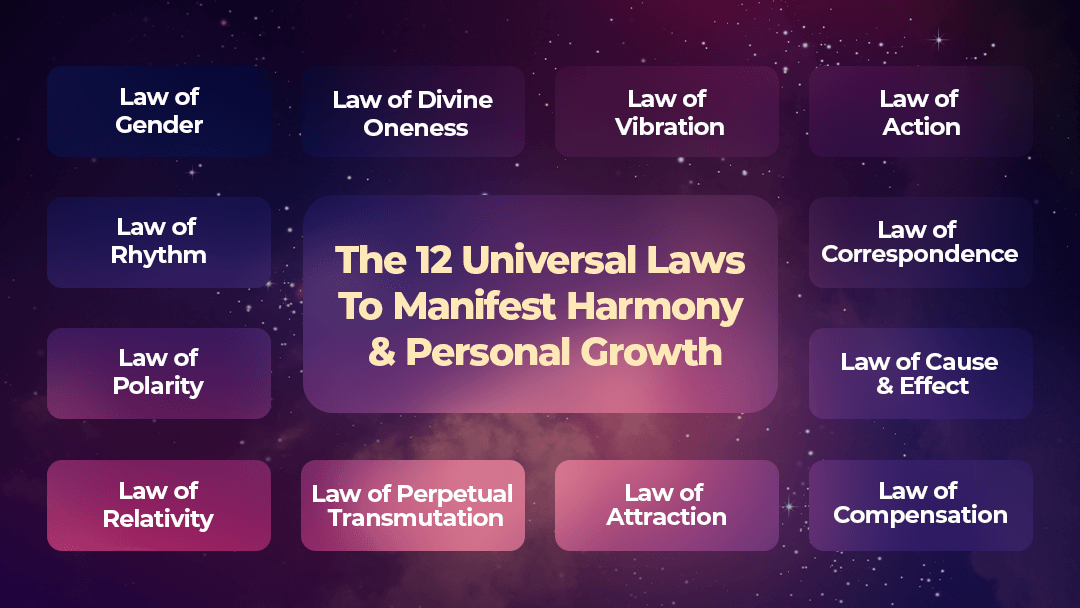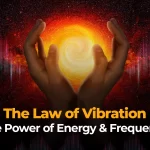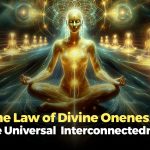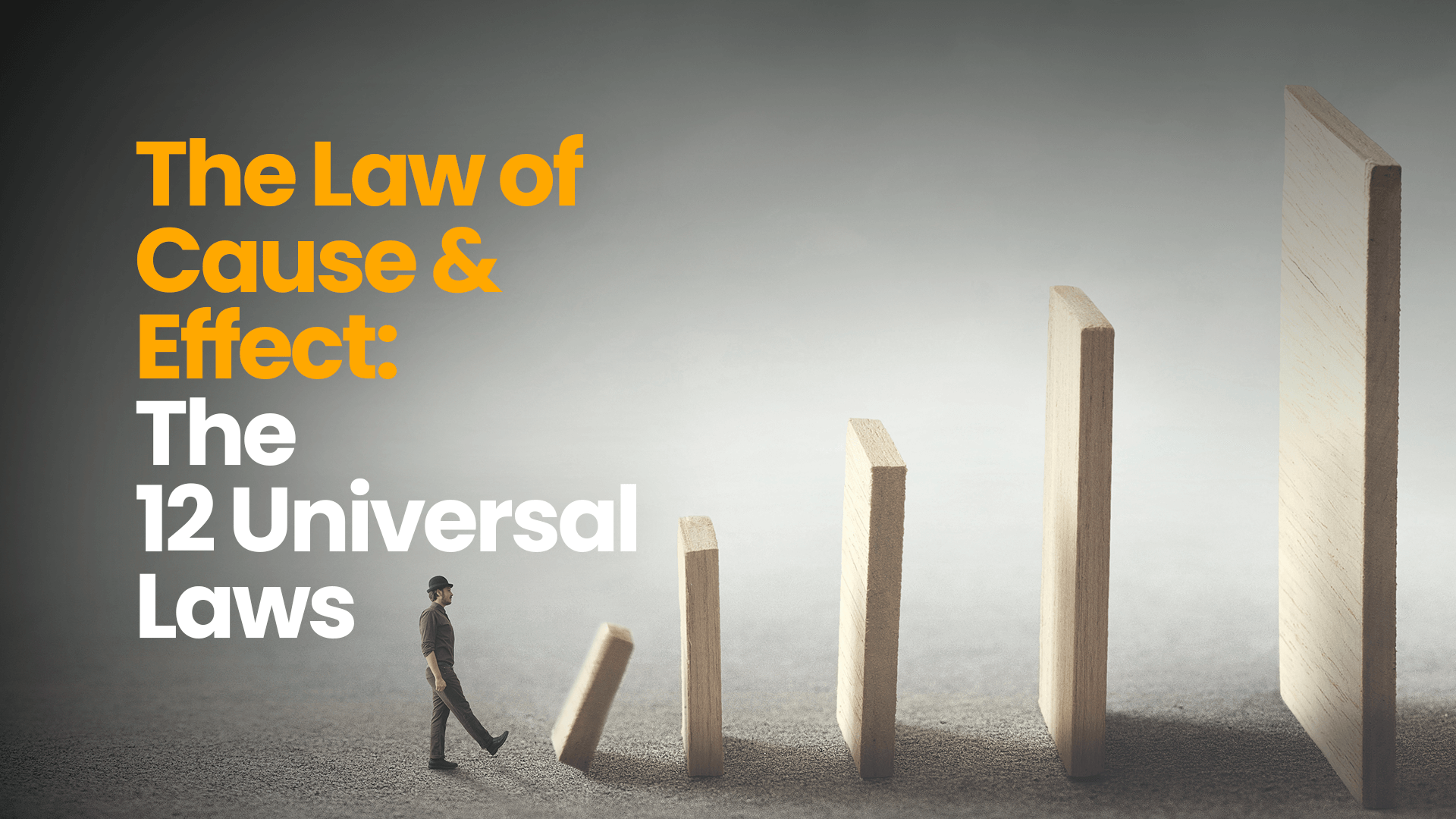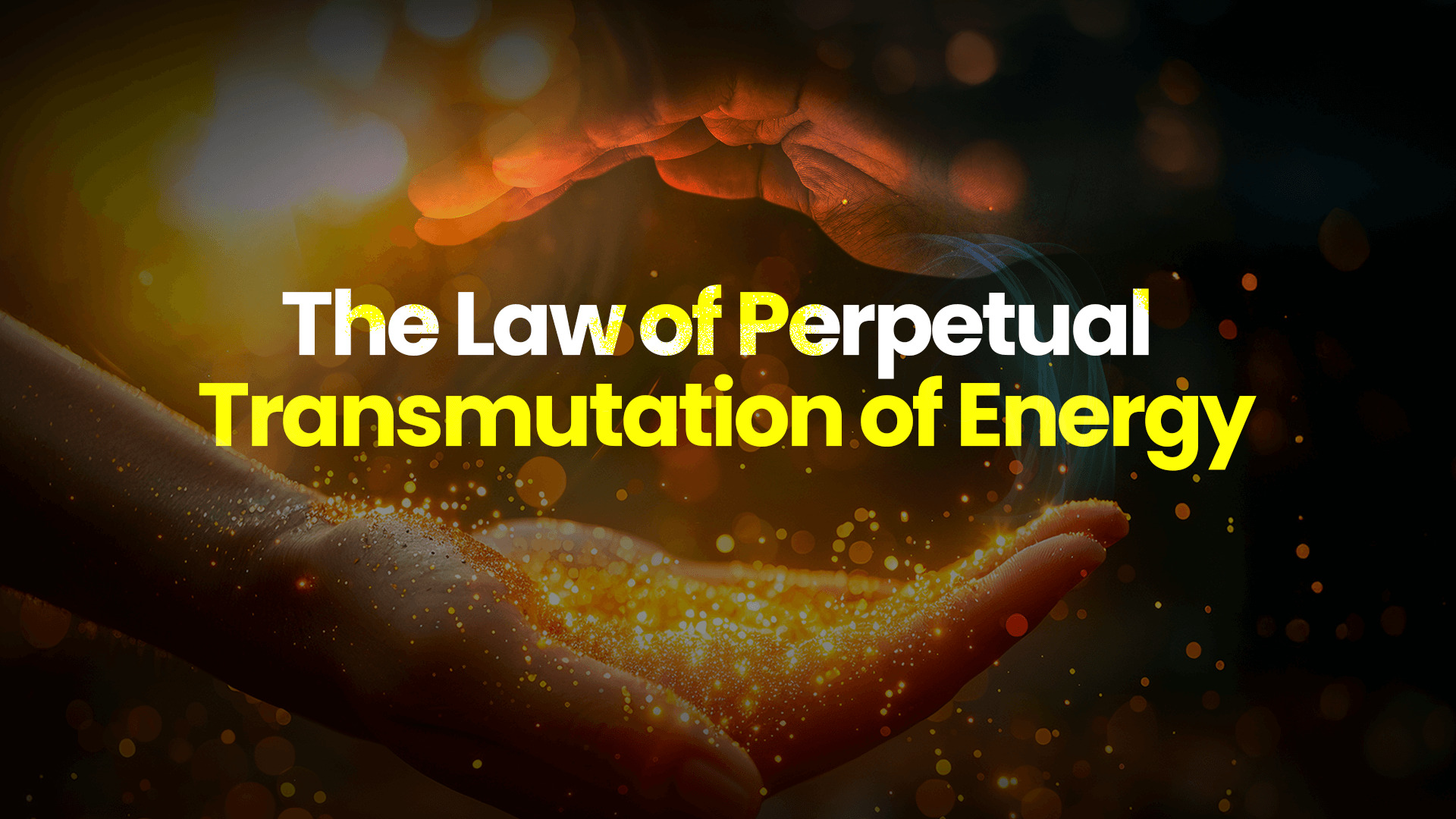Did you ever stop to wonder about the cosmic dance of energy that shapes our existence? Beyond the hustle and bustle of everyday life, have you ever considered the deeper principles that govern our world? What if I told you that there are 12 Universal Laws that hold the keys to unlocking personal growth and spiritual development?
Imagine a life filled with harmony and fulfillment – all within your grasp by understanding and applying these profound laws. Let’s journey together into the cosmic realm of the universe and uncover the timeless wisdom that can transform our lives.
Introduction to the 12 Universal Laws
The concept of Universal Laws has roots in ancient wisdom traditions and has been explored by philosophers, spiritual leaders, and modern-day thinkers alike. These laws are believed to be immutable principles that govern the universe, affecting every aspect of our existence.
By gaining a deeper understanding of these laws, you can:
- Align your actions with the natural flow of the universe
- Enhance your personal growth and self-awareness
- Improve your relationships and interactions with others
- Manifest your desires more effectively
- Find greater meaning and purpose in life
In this comprehensive guide, we’ll explore each of the 12 Universal Laws, their significance, and practical ways to apply them in your daily life.
1. The Law of Divine Oneness
Key Concepts: Interconnectedness, Unity, Holistic Perspective
The Law of Divine Oneness is the foundation of all the Universal Laws. It states that everything in the universe is interconnected and part of a greater whole. This law reminds us that our thoughts, actions, and energy affect not only ourselves but also the world around us.
How to Apply
- Practice mindfulness to become more aware of your connection to others and the environment.
- Cultivate empathy and compassion by recognizing that others’ experiences are interconnected with your own.
- Make choices that consider the well-being of the collective, not just your individual needs.
Scientific Perspective
Quantum entanglement, a phenomenon in quantum physics, provides a scientific analogy for the Law of Divine Oneness. Physicist David Bohm proposed the idea of an “implicate order” that underlies all of reality, suggesting a deep interconnectedness at the quantum level.
“We are all connected; To each other, biologically. To the earth, chemically. To the rest of the universe atomically.” – Neil deGrasse Tyson
2. The Law of Vibration
Key Concepts: Energy, Frequency, Resonance
The Law of Vibration posits that everything in the universe is in constant motion, vibrating at specific frequencies. This includes physical matter, thoughts, and emotions. Understanding this law can help you align your energy with your desired outcome
How to Apply
- Be mindful of your thoughts and emotions, recognizing that they emit vibrations.
- Surround yourself with positive influences that resonate with your goals.
- Use techniques like meditation or visualization to raise your vibrational frequency.
Scientific Perspective
String Theory in physics proposes that all particles in the universe are actually tiny vibrating strings of energy. While still theoretical, this concept aligns with the ancient idea of universal vibration.
Recommended Reading
“The Hidden Messages in Water”by Masaru Emoto explores how thoughts and intentions can affect the molecular structure of water, illustrating the power of vibration.
3. The Law of Correspondence
Key Concepts: Reflection, Microcosm and Macrocosm, As Above So Below
This law suggests that patterns and principles observable in one aspect of reality are reflected in others. It’s often summarized by the Hermetic axiom, “As above, so below; as within, so without.”
How to Apply
- Observe patterns in your life and consider how they might reflect larger universal truths.
- Look for solutions to personal challenges by studying natural systems and processes.
- Recognize that your inner world (thoughts, beliefs) is reflected in your outer experiences.
Historical Context
The concept of correspondence has been present in many ancient philosophies, including Hermeticism and Taoism.
The Emerald Tablet, an ancient Hermetic text, famously states: “That which is Below corresponds to that which is Above, and that which is Above corresponds to that which is Below, to accomplish the miracle of the One Thing.”
4. The Law of Attraction
Key Concepts: Manifestation, Like Attracts Like, Focus and Intention
Perhaps the most well-known of the Universal Laws, the Law of Attraction, states that you attract into your life what you focus on and believe. Your thoughts and emotions act as a magnet, drawing experiences that match your mental state.
How to Apply
- Cultivate positive thoughts and emotions to attract positive experiences.
- Use affirmations and visualization techniques to focus on your desired outcomes.
- Practice gratitude to shift your focus to the abundance in your life.
Scientific Perspective
While the Law of Attraction isn’t scientifically proven in the traditional sense, research in neuroscience and psychology supports the idea that our thoughts and beliefs can significantly influence our perceptions and behaviors, thereby affecting our experiences.
“Whether you think you can, or you think you can’t – you’re right.” – Henry Ford
5. The Law of Inspired Action
Key Concepts: Alignment, Intuition, Purposeful Action
This law emphasizes the importance of taking inspired action in alignment with your goals and the universe’s flow. It’s not just about positive thinking but about combining thoughts with purposeful action.
How to Apply
- Listen to your intuition and act on ideas that feel energizing and aligned.
- Break larger goals into smaller, manageable steps.
- Remain open to unexpected opportunities that align with your intentions.
Practical Exercise
Create an “Inspired Action Journal” where you write down ideas and intuitive nudges as they come to you. Review this journal regularly and choose actions that resonate with your goals.
6. The Law of Perpetual Transmutation of Energy
Key Concepts: Transformation, Continuous Change, Energy Flow
This law states that energy is constantly moving and transforming. It suggests that all people have the power to change the conditions in their lives by harnessing and redirecting energy.
How to Apply
- Recognize that change is constant and embrace it as an opportunity for growth.
- Channel your energy towards positive change in your life.
- Practice energy management techniques like meditation or yoga to direct your personal energy more effectively.
Scientific Perspective
The First Law of Thermodynamics, which states that energy cannot be created or destroyed but only changed from one form to another, aligns with this universal law.
“The only way to make sense out of change is to plunge into it, move with it, and join the dance.” – Alan Watts
7. The Law of Cause and Effect
Key Concepts: Karma, Action and Reaction, Responsibility
Also known as the Law of Karma, this principle states that every action has a consequence. It emphasizes personal responsibility and the ripple effect of our choices.
How to Apply
- Be mindful of your actions and their potential consequences.
- Take responsibility for your life circumstances, recognizing them as results of past actions.
- Make choices aligned with your desired outcomes.
Historical Context
The concept of Karma is central to many Eastern philosophies, including Hinduism and Buddhism. In these traditions, Karma is seen as a natural law of cause and effect that extends beyond a single lifetime.
Recommended Reading
“The Seven Spiritual Laws of Success” by Deepak Chopra offers insights into cause and effect and how to align with universal principles for success.
8. The Law of Compensation
Key Concepts: Giving and Receiving, Balance, Abundance
This law suggests that you will always be compensated for your efforts and contributions, whether positive or negative. It’s closely related to the Law of Cause and Effect but focuses specifically on the idea of receiving in proportion to what you give.
How to Apply
- Give value freely without expectation of immediate return.
- Cultivate an abundance mindset, recognizing that giving creates space for receiving.
- Seek ways to contribute positively to others and your community.
“The law of harvest is to reap more than you sow. Sow an act, and you reap a habit. Sow a habit and you reap a character. Sow a character and you reap a destiny.” – James Allen
9. The Law of Relativity
Key Concepts: Perspective, Comparison, Subjective Experience
This law states that nothing is inherently good or bad, big or small. Everything is relative and can only be judged in comparison to something else.
How to Apply
- Practice gratitude by comparing your situation to less fortunate circumstances.
- Avoid comparing yourself to others; instead, focus on your personal growth.
- Reframe challenges by considering them in a broader context.
Scientific Perspective
Einstein’s Theory of Relativity, while different in its specifics, shares the philosophical notion that measurement and perception can vary based on the observer’s frame of reference.
Practical Exercise
Keep a “Perspective Journal” where you write about challenging situations from different viewpoints. This can help you develop a more balanced and relative perspective on life events.
10. The Law of Polarity
Key Concepts: Duality, Balance, Opposites
The Law of Polarity suggests that everything has an opposite and that these opposites are actually two extremes of the same thing. Understanding this law can help you find balance and see the positive in seemingly negative situations.
How to Apply
- When facing a challenge, look for the potential opportunity within it.
- Recognize that every trait or situation has its opposite, and both are necessary for balance.
- Use contrast to appreciate and cultivate desired qualities in your life.
Historical Context
The concept of polarity is present in many philosophical and spiritual traditions, such as the Taoist idea of Yin and Yang, representing the complementary nature of seemingly opposite forces.
“When you are able to shift your inner awareness to how you can serve others, and when you make this the central focus of your life, you will then be in a position to know true miracles in your progress toward prosperity.” – Wayne Dyer
11. The Law of Rhythm
Key Concepts: Cycles, Patterns, Flow
The Law of Rhythm posits that everything in the universe moves in cycles or patterns. This includes natural phenomena like seasons, as well as the ebbs and flows of our personal lives.
How to Apply
- Recognize the natural rhythms in your life and align your actions with them.
- During challenging times, remember that “this too shall pass.”
- Use the understanding of life’s rhythms to plan and prepare for different phases.
Scientific Perspective
Chronobiology, the study of biological rhythms, provides scientific insight into how natural cycles affect living organisms. Understanding your personal biological rhythms can help you optimize your daily activities and overall well-being.
Recommended Reading
“The Power of When” by Michael Breus explores how understanding your body’s natural rhythms can help you improve various aspects of your life, from productivity to health.
12. The Law of Gender
Key Concepts: Masculine and Feminine Energy, Creation, Gestation
The Law of Gender goes beyond biological sex and refers to the masculine (giving) and feminine (receiving) principles that exist in all things. It also relates to the process of creation and the time required for ideas to manifest.
How to Apply
- Recognize and balance both masculine and feminine energies within yourself.
- Understand that creation takes time and requires both active and passive phases.
- Respect the natural gestation period of your goals and ideas.
Historical Context
Many ancient traditions recognize the interplay of masculine and feminine energies, such as the concept of Shiva and Shakti in Hinduism or the balance of Yin and Yang in Chinese philosophy.
“The creative process is a process of surrender, not control.” – Julia Cameron
Integrating the 12 Universal Laws into Your Life
Understanding these laws is just the first step. The real power comes from integrating them into your daily life. Here are some strategies to help you apply these principles:
- Daily Reflection
- Mindfulness Practice
- Journaling
- Visualization
- Study and Learn
- Apply One Law at a Time
- Seek Balance
Set aside time each day to reflect on how the Universal Laws are manifesting in your life.
Develop a mindfulness practice to become more aware of your thoughts, emotions, and actions.
Keep a journal to track your experiences and insights related to the Universal Laws.
Use visualization techniques to align your mental state with your desired outcomes.
Continue to deepen your understanding of these laws through reading, workshops, or discussions with like-minded individuals.
Focus on applying one law at a time in your life until it becomes second nature before moving on to the next.
Remember that all the laws work together. Strive for balance by applying them rather than focusing too heavily on one aspect.
The Science Behind Universal Laws
While the 12 Universal Laws are often associated with spiritual or metaphysical concepts, many of them have parallels in scientific understanding:
- Quantum Physics
- Psychology
- Neuroscience
- Systems Theory
Concepts like entanglement and the observer effect align with ideas of interconnectedness and the power of consciousness.
Positive psychology research supports the idea that our mindset and focus can significantly impact our experiences and outcomes.
Studies on neuroplasticity show how our thoughts and experiences can physically reshape our brains, supporting the idea that we can change our reality through our mental state.
This scientific framework emphasizes the interconnectedness of different parts within a system, echoing the Law of Divine Oneness.
While these scientific concepts don’t prove the Universal Laws in a traditional sense, they offer intriguing parallels that bridge ancient wisdom with modern understanding.
5 Common Challenges in Applying the Universal Laws
While the 12 Universal Laws offer a powerful framework for personal growth and understanding, applying them consistently can be challenging. Common obstacles include:
- Skepticism
- Impatience
- Inconsistency
- Misinterpretation
- Resistance to Change
It’s natural to be skeptical of concepts that can’t be directly measured or proven.
Results may not be immediate, leading to frustration or doubt.
Applying these laws requires consistent effort and mindfulness.
It’s easy to misunderstand or misapply these concepts without proper guidance.
Shifting long-held beliefs and habits can be uncomfortable.
To overcome these challenges, remember that working with the Universal Laws is a journey of personal growth. Be patient with yourself, seek guidance when needed, and celebrate small victories along the way.
The Final Note: The 12 Universal Laws
The 12 Universal Laws offer a profound framework for understanding the workings of the universe and our place within it. By aligning your thoughts, actions, and energy with these principles, you can create more harmony, fulfillment, and purpose in your life.
Remember, the journey of understanding and applying these laws is ongoing. Each day presents new opportunities to deepen your awareness and practice. As you continue to explore and integrate these laws into your life, you may find yourself experiencing greater peace, abundance, and connection with the world around you.
We encourage you to reflect on how these laws resonate with your own experiences and to share your insights with others. By doing so, you deepen your understanding and contribute to the collective growth and awareness of those around you.
Reach Dr. Chandni’s support team at +918800006786 and book an appointment.
